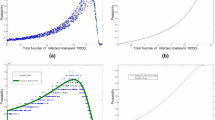Abstract
Worms are commonly disseminated through two methods: scanning vulnerable machines in a network as well as spreading through topological neighbors. Modeling worm propagation can assist us in understanding how worms propagate and develop efficient defense tactics. However, most past studies either focused on their intended task or explored detection systems as well as defense systems. Few provide very detailed study in worm propagation modeling, that is useful in building defense mechanisms to deal with worm spread. This work includes a survey as well as comparison of worm propagation models based on two independent worm-spreading strategies. We first define worm features based on their spreading behavior and then classify the numerous target discovery approaches they deploy. In addition, we examine several topologies for modeling worm spreading, analyze numerous models of worm propagation and their effectiveness. On the basis of the analysis of worm spread and current studies, future directions for modeling worm propagation models are offered.
Access this chapter
Tax calculation will be finalised at checkout
Purchases are for personal use only
Similar content being viewed by others
References
Yan G, Chen G, Eidenbenz S, Li N (2011) Malware propagation in online social networks: nature, dynamics, and defense implications. In: Proceedings 6th ACM Symposium on Information, Computer and Communications Security. ACM, pp 196–206
Vazquez A, Racz B, Lukacs A, Barabasi A-L (2007) Impact of non-Poissonian activity patterns on spreading processes. Phys Rev Lett 98(15):158702
Sellke SH, Shroff NB, Bagchi S (2008) Modeling and automated containment of worms. IEEE Trans Depend Secure Comput 5(2):71–86
Zou CC, Gong W, Towsley D (2002) Code red worm propagation modeling and analysis. In: Proceedings of the 9th ACM Conference on Computer and Communications Security
Weaver N, Paxson V, Staniford S, Cunningham R (2003) A taxonomy of computer worms. In: First Workshop on Rapid Malcode (WORM)
Virus: W32/Melissa Description. F-Secure Labs. www.f-secure.com
Carnegie Mellon University Software Engineering Institute, CERT® Advisory CA-2000-04 “Love Letter Worm”. Kaspersky Labs
W32.Sircam.Worm@mm (2010) Symantec. Archived from the original on 2010. Timeline of Computer Worms and Viruses. Accessed 24 Dec 2010
Win32/Mydoom (Nov 9, 2004) Microsoft. Accessed 15 June 2022
Wong C, Wang C, Song D, Bielski S, Ganger GR (2004) Dynamic quarantine of internet worms. In: Proceedings IEEE International Conference Dependable Systems and Networks, pp 73–82
Zou CC, Gong W, Towsley D (2003) Worm propagation modeling and analysis under dynamic quarantine defense. In: Proceedings ACM Workshop Rapid Malcode, pp 51–60
Chen Z, Gao L, Kwiat K (2003) Modeling the spread of active worms. In: Proceedings IEEE INFOCOM ‘03, pp 1890–1900
Yong T, Jiaqing L, Bin X, Guiyi W (2009) Concept, characteristics and defending mechanism of worms. IEICE Trans Inform Syst 92(5):799–809
Rajesh B, Reddy YR and Kumar Reddy B (2015) A survey paper on malicious computer worms. In: International Journal of Advanced Research in Computer Science & Technology
Berk VH, Gray RS, Bakos G (2003) Using sensor networks and data fusion for early detection of active worms. Proc. SPIE AeroSense 5071:92–104
Bartiomiejczyk J, Phipps M (2007) Preventing layer 2 security threats
Sharma V (2011) An analytical survey of recent worm attacks. Int J Comput Sci Netw Secur 11(11):99–103
Nellutla R, Goranthala VP, Parvez FA (2013) Classification of different computer worms with dynamic detection using victim number based algorithm. Int J Eng Res Appl 3(4):803–812
Fan X, Xiang Y (2010) Defending against the propagation of active worms. J Supercomput 51(2):167–200
Xiang Y, Fan X, Zhu W (2009) Propagation of active worms: a survey. Int J Comput Syst Sci Eng 24(3):157–172
Chen Y, Ji C (2005) Importance-scanning worm using vulnerable host distribution. In: IEEE Global Telecommunications Conference, GLOBECOM’05, vol 3, p 6. IEEE
Hu J, Yu X, Qiu D, Chen H-H (2009) A simple and efficient hidden Markov model scheme for host-based anomaly intrusion detection. IEEE Netw 23(1):42–47
Berghel H (2001) The code red worm. Commun ACM 44(12):15–19
Zou CC, Towsley D, Gong W (2007) Modeling and simulation study of the propagation and defense of internet e-mail worms. IEEE Trans Depend Secure Comput 4(2):105–118
Fearnow M, Stearns W (2001) SANS Global Incident Analysis Center—Lion Worm Version 0.12. http://www.sans.org/y2k/lion.htm
Author information
Authors and Affiliations
Corresponding author
Editor information
Editors and Affiliations
Rights and permissions
Copyright information
© 2024 The Author(s), under exclusive license to Springer Nature Singapore Pte Ltd.
About this paper
Cite this paper
Rao, M.V., Midhunchakkaravarthy, D., Dandu, S. (2024). Propagation of Computer Worms—A Study. In: Zen, H., Dasari, N.M., Latha, Y.M., Rao, S.S. (eds) Soft Computing and Signal Processing. ICSCSP 2023. Lecture Notes in Networks and Systems, vol 840. Springer, Singapore. https://doi.org/10.1007/978-981-99-8451-0_54
Download citation
DOI: https://doi.org/10.1007/978-981-99-8451-0_54
Published:
Publisher Name: Springer, Singapore
Print ISBN: 978-981-99-8450-3
Online ISBN: 978-981-99-8451-0
eBook Packages: Intelligent Technologies and RoboticsIntelligent Technologies and Robotics (R0)




